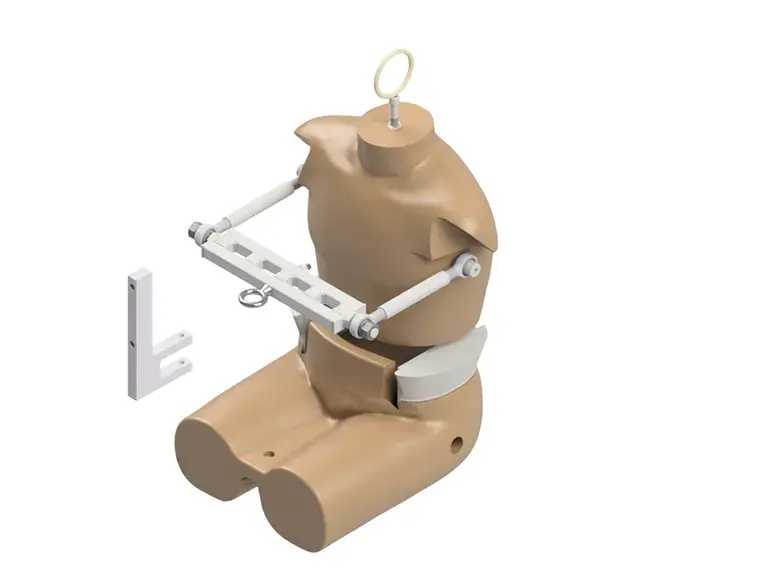
FAD1
- Standard ATD 221-210-01
FAD, which is an acronym for Force Application Device, is used for seat belt anchorage testing. The FAD was developed to have a more biofidelic body form to load seat belt restraint anchorage systems for both an adult and child sizes form.
NHTSA released a 2024 update to FMVSS 210 to include the FAD1 (previously called FAD) as an alternative option to the body blocks used in seat belt testing. The body blocks were not attached to each other and left ambiguities as to how they should be set up, as well as needing preload to keep them in the correct position. The FAD was created to provide a more biofidelic solution to these issues.
Specifications
Key Features
- Torso Angle Set at 10°
- Range of motion: 45° forward and 35° rearward
Product Specifications
| OVERALL HEIGHT | 640.08 mm | 25.2 in |
| BUTTOCK TO SHOULDER PIVOT | 467.36 mm | 18.4 in |
| LEG HEIGHT | 157.48 mm | 6.2 in |
| SHOULDER WIDTH | 449.58 mm | 17.7 in |
| PELVIS WIDTH | 353.06 mm | 13.9 in |
| PELVIS HEIGHT | 266.7 mm | 10.5 in |
| TOTAL WEIGHT | 55.79 kg | 123 lb |
Applications
The FAD1 is an optional new test device that can be used to replace the body blocks in the Federal Motor Vehicle Safety Standard (FMVSS) No. 210, “Seat belt assembly anchorages” tests.